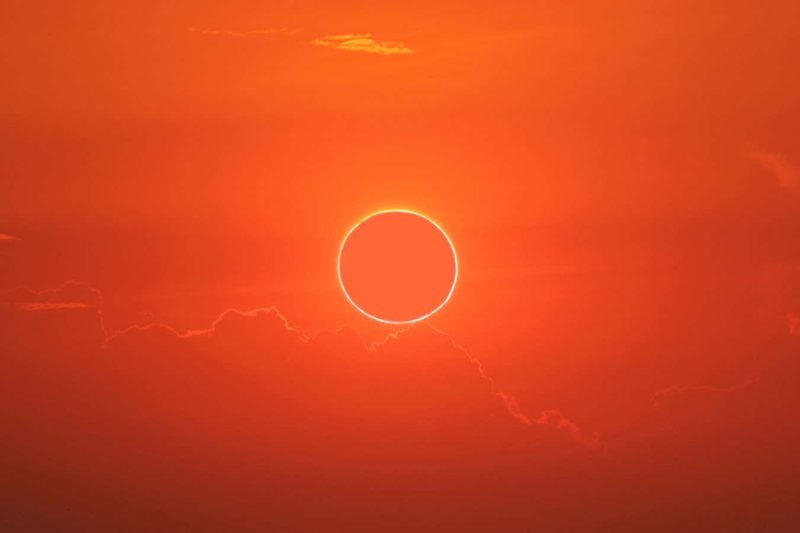An annular solar eclipse will be visible in the Americas on 14 October
An annular solar eclipse is set to occur in North and South America on 14 October. Unlike total solar eclipses, annular eclipses are referred to as “ring of fire” eclipses because the moon does not completely block the sun, resulting in a bright ring around the edges of the moon.
Understanding Solar Eclipses
Solar eclipses happen when the moon moves between the sun and Earth, casting a shadow over a specific area on the planet. The moon’s orbit is not perfectly circular, causing its apparent size in the sky to slightly change each month. During a total solar eclipse, the moon is close enough to Earth to appear as the same size as the sun, completely covering it. In contrast, an annular eclipse occurs when the sun, moon, and Earth align perfectly, but the moon is slightly further away, resulting in it appearing smaller than the sun.
Highlights of the October Solar Eclipse
During the peak of the October 14 eclipse, the moon will cover approximately 91 percent of the sun’s disc. This phenomenon will be visible in the western US, with the best viewing spots along the path that stretches through Oregon, Nevada, Arizona, New Mexico, and Texas. Additionally, the eclipse will also pass through Mexico, Belize, Honduras, Nicaragua, Costa Rica, Panama, and Colombia, before sweeping across Brazil.
The annular eclipse will be visible along a strip of Earth that is roughly 200 kilometers wide. Spectators in the prime locations will be able to observe the eclipse for up to 5 minutes and 17 seconds. Outside of this narrow path, regions will experience a partial solar eclipse, where the moon does not align perfectly to create the “ring of fire.” This partial eclipse will be visible across most of the US, Canada, South America, and even the western edge of Africa.
Frequency of Annular Solar Eclipses
Annular solar eclipses occur somewhere in the world approximately once every year or two, similar to the frequency of total solar eclipses. The next total eclipse is scheduled for 8 April 2024 and will follow a similar path to the upcoming annular eclipse, passing through a significant portion of the Americas.
Conclusion
The October solar eclipse in the Americas offers a unique opportunity for astronomy enthusiasts to witness the stunning “ring of fire” phenomenon. Whether experiencing the annular eclipse directly in the prime locations or observing the partial eclipse from other parts of the Americas, this celestial event is bound to leave a lasting impression.








